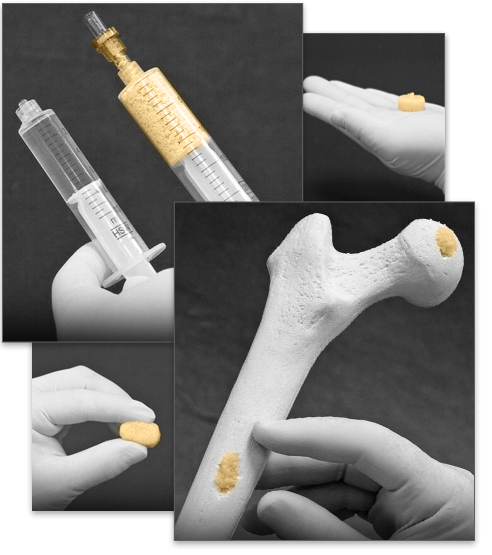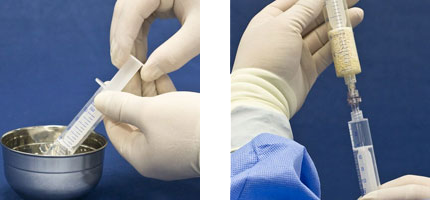
NanoFUSE Bioactive Matrix
Advanced Bone Void Filler Implants
NanoFUSE® offers surgeons the synergistic combination of bioactive glass and demineralized allograft bone in a single product.
- Calcium-based 45S5 bioactive glass, the first human made material to release calcium and form a direct chemical bond with tissue, creates an exceedingly strong bond between the graft and adjacent bony tissue within minutes1
- Facilitates graft containment at the operative site as well as activates cellular osteogenesis2
- Demineralized allograft bone (DBM) supports cell attachment and proliferation and has shown the potential to induce bone formation2
- Outperforms bone void filler implants that include only DBM2
- Contains DBM that is 100% tested for osteoinductive potential
The original formulation of 45S5 bioactive glass was invented in 1971. The capacity for rapid interfacial bonding is the result of chemical reactions that take place on the surface of bioactive glass when it is exposed to bodily fluids. This rapid bone bonding ensures positional stability of the graft during the critical period immediately following surgery.
Consistent handling and delivery characteristics
Utilizing a patent-protected method of precipitating a gelatin onto the bioactive glass and demineralized bone matrix, NanoFUSE Bioactive Matrix offers ease of preparation and shaping for the filling of osseous defects.

Osteoconductive, Osteoinductive and Osteopromotive Solutions
A synergistic combination of BioActive Glass and Demineralized Bone
References:
1. Oonishi H, Kushitani S, Yasukawa E, Iwaki H, Hench LL, Wilson J, Tsuji E, Sugihara T (1997) Particulate bioglass compared with hydroxyapatite as a bone graft substitute. Clin Orthop Relat Res 334:316–325
2. Kirk T. J, (2012) Osteoconductivity and osteoinductivity of NanoFUSE® DBM. Cell Tissue Bank DOI 10.1007/s10561-012-9297-1